Forfar and Brechin Railway
Introduction
This line is closed. It opened in 1895 and was a single track line serving an agricultural area of low population and effectively paralleled the Strathmore main line. The route served an area which would have been served by some of the proposed, but unbuilt, routes of the Aberdeen Railway at its southern end.
A common service for passenger workings was from Brechin to Dundee East, going via Careston, Forfar [2nd], Kingennie and Broughty Ferry. Timings were quite tight, about 28 minutes from Brechin to Forfar [2nd].
It closed to passengers in 1952 and in 1958 a portion closed making it a branch from Forfar South Junction to Careston. This was further cut back to Justinhaugh in 1964 and the remainder closed in 1967 at the same time as the Strathmore main line itself closed to passengers and was reduced to a branch to Forfar [2nd] from Perth.
Structures were varied with some built in stone (abutments of large bridges, loading banks, bridges over roads) and others in concrete (station platforms and some of the small bridges over the line). Land was taken for two tracks, some structures were built for the two lines but only carried one.
The largest structures on the line were the South Esk Viaduct [Tannadice] and smaller Noran Water Viaduct.
Dates
Portions of line and locations
This line is divided into a number of portions.
Forfar to Brechin
This junction was to the west of Forfar [2nd station, not so much south as more north west, indeed it was further north than Forfar North Junction which was east of Forfar [1st]. However in railway terms it was south of the station as it was closer to Perth.
...
See also
Scottish Midland Junction Railway
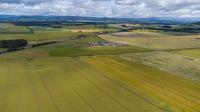
Ewan Crawford 18/07/2023

Ewan Crawford 18/07/2023
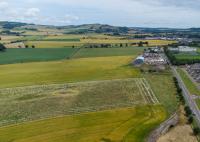
Ewan Crawford 18/07/2023
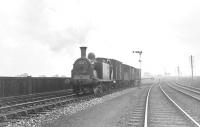
See
G H Robin collection by courtesy of the Mitchell Library, Glasgow 20/07/1953
Cairn Siding did not open with the Forfar and Brechin Railway. It was a rural siding south west of Justinhaugh. The siding was on the north/west side of the line and approached from the Forfar [2nd] direction. There was a loading bank, a small hut and the line was crossed by a girder bridge here carrying a private road.
...
This was a two platform station with a passing loop. The main station building was on the westbound platform. There was a cottage in the station yard and a goods yard approached from the west. The signal box was at the west end of the eastbound platform. It opened with the line.
...
This single track viaduct carried the Caledonian Railway's Forfar and Brechin Railway over the South Esk just to the south of the village of Tannadice and west of Tannadice station. The abutments were built in stone, with substantial protection built around the piers for when the river was in spate.
...
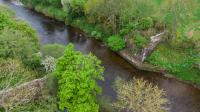
Ewan Crawford 22/05/2023
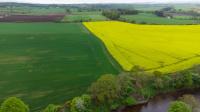
Ewan Crawford 22/05/2023
This was a single platform station, on the south side of the single track line, with a pair of sidings opposite the platform, approached from the east. There was a station building on the platform and station house to the west.
...
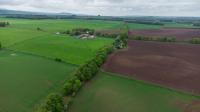
Ewan Crawford 22/05/2023
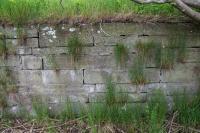
Ewan Crawford 22/05/2023
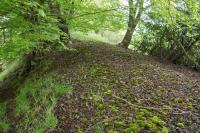
Ewan Crawford 22/05/2023
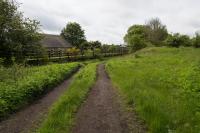
Ewan Crawford 22/05/2023
This was a double track viaduct, which only carried one track. It was the second largest structure on the Forfar and Brechin Railway (after the South Esk Viaduct [Tannadice]). The viaduct crossed the Noran Water which is in a deep tree-lined gully below the farmland to either side. It was located between Tannadice and Fern Siding. Only the westbound line was laid.
...
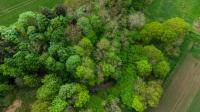
Ewan Crawford 22/05/2023

Ewan Crawford 22/05/2023
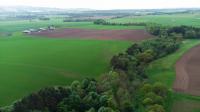
Ewan Crawford 22/05/2023
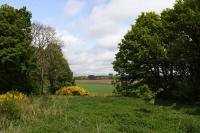
Ewan Crawford 22/05/2023
This siding was located between Tannadice and Careston. It was a short siding on the north side of the line, approached from the east. It was directly west of a level crossing with Whammond's Loan, a road which has since fallen out of use. There was a railway cottage on the north side of the line and very short loading bank.
...
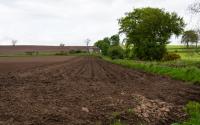
Ewan Crawford 22/05/2023
Located in a rural location to the north of Careston this was a two platform station with a passing loop and the main station building on the westbound platform.
...
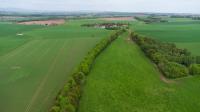
Ewan Crawford 22/05/2023
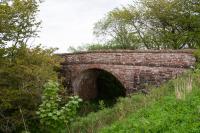
Ewan Crawford 22/05/2023
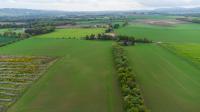
Ewan Crawford 22/05/2023
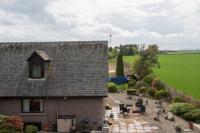
Ewan Crawford 22/05/2023
This was a junction between the Forfar and Brechin Railway lines (opened 1895) and the Brechin and Edzell District Railway line (opened 1896).
...
See also
Brechin and Edzell District Railway
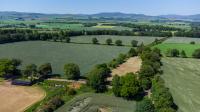
Ewan Crawford 15/06/2023
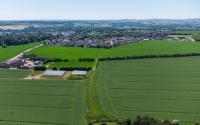
Ewan Crawford 15/06/2023
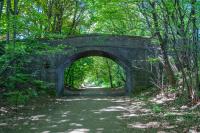
Ewan Crawford 15/06/2023
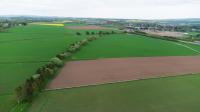
Ewan Crawford 22/05/2023
This junction was controlled by a ground frame. The east fork of the Forfar and Brechin Railway met the former Aberdeen Railway branch to Brechin at a junction which allowed running from the Forfar line to Bridge of Dun bypassing Brechin. Land was taken on this fork for two tracks, the same as the rest of the Forfar and Brechin Railway, although only one line was laid (the ...
More detailsSee also
Aberdeen Railway
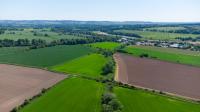
Ewan Crawford 15/06/2023
Books












